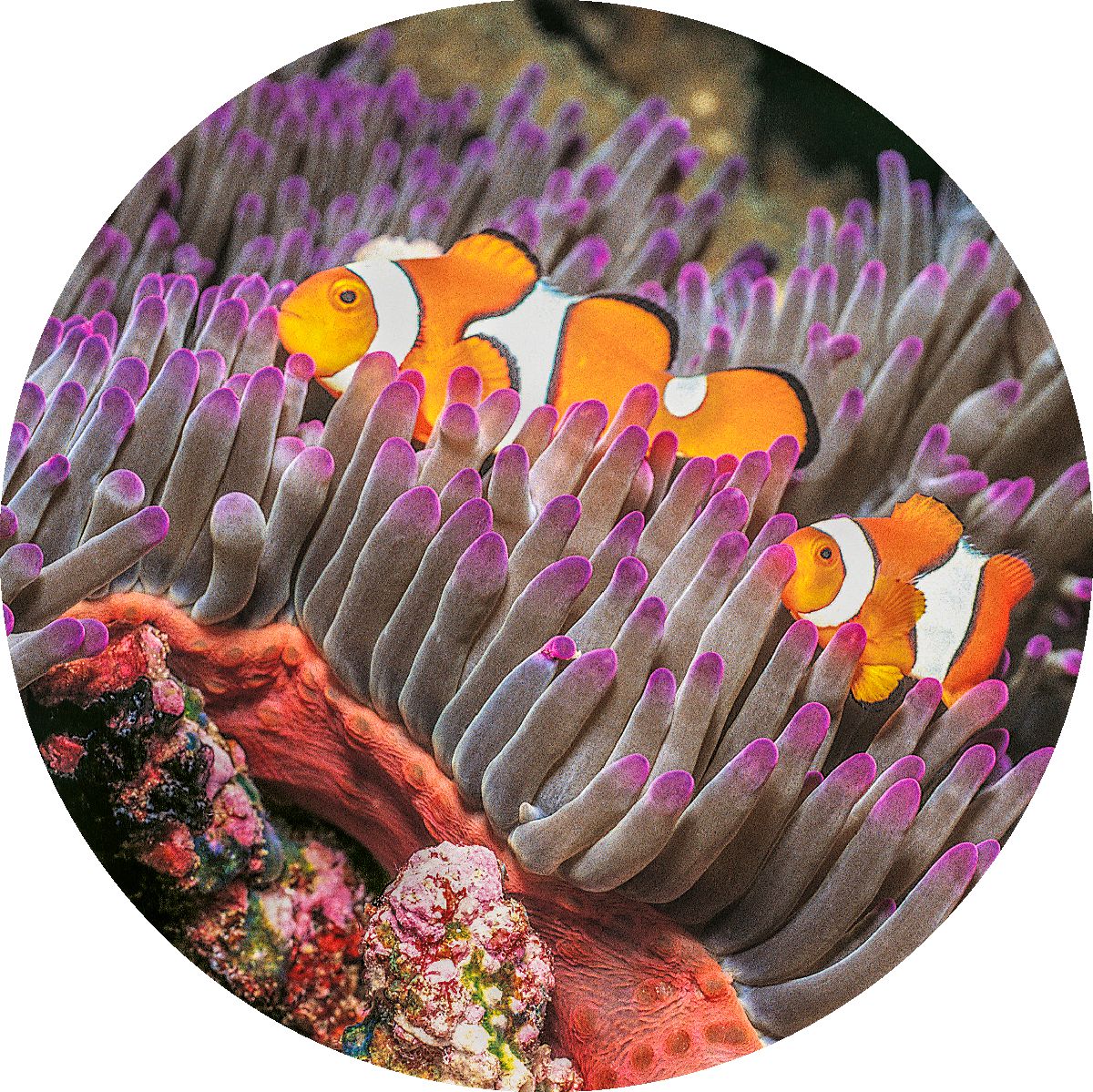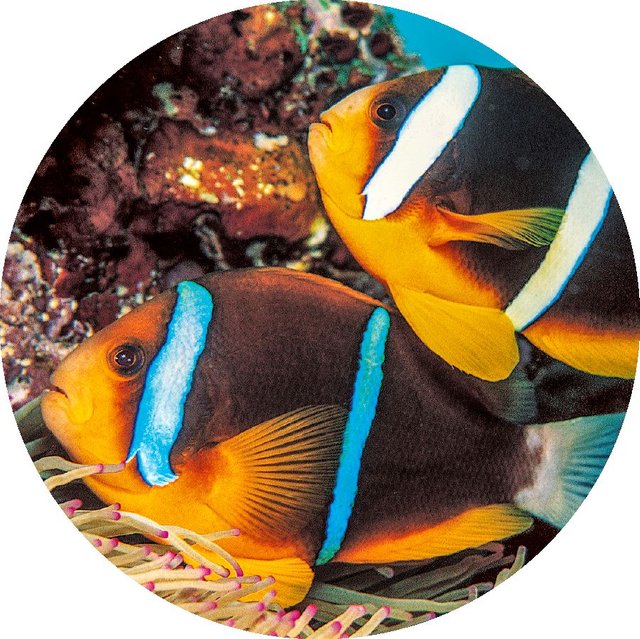The Extraordinary Clown Fish

FEW fish grab our attention the way the clown fish does. Perhaps it wins our hearts with its fancy coloring, which may remind us of a circus clown. Or maybe we are struck by its surprising choice of home—among the stinging tentacles of a sea anemone. Not surprisingly, another name for the clown fish is anemonefish.
Like many Hollywood actors, clown fish are not averse to photographs. Divers and snorkelers can usually expect clown fish to “pose” for pictures, since they rarely stray far from home and are not particularly shy.
But what makes clown fish extraordinary is their seemingly risky lifestyle. Living among poisonous tentacles would seem to be comparable to setting up home in a nest of serpents. Still, clown fish and their anemone of choice are inseparable. What makes this strange partnership possible and successful?
‘I CANNOT LIVE WITHOUT YOU’

Two-banded clown fish
Like most good partnerships, clown fish and anemones give and take. The relationship is not merely convenient for the clown fish; it is vital. Marine biologists have confirmed that clown fish cannot live in the wild without a host anemone. They are poor swimmers and would be at the mercy of hungry predators without the anemone’s protection. However, by using the anemone as a home base and as a safe shelter when threatened, the clown fish may reach ten years of age.
The anemone provides a safe nesting site as well as a home. The clown fish deposit their eggs at the base of the host anemone, where both parents keep careful watch over them. Later, the clown fish family can be seen swimming around that same anemone.
What does the anemone get out of this relationship? The clown fish serve as marine bodyguards, driving away butterfly fish that like to feed on anemone tentacles. At least one species of anemone cannot live without resident clown fish. When researchers removed the clown fish, within just 24 hours, the anemones had disappeared completely. Apparently, butterfly fish had consumed them.
It seems that clown fish even provide their host with energy. The ammonium that clown fish excrete helps spur growth in the host anemone. And as the clown fish swim among the tentacles, they help circulate oxygen-rich water to the anemone.
GOING WHERE OTHERS FEAR TO SWIM

Pink skunk clown fish
In the case of clown fish, protection is skin-deep. They have mucus on their skin that keeps them from being stung. Thanks to this chemical coating, it seems the anemone considers the clown fish one of its own. As one marine biologist put it, the clown fish becomes “a fish in anemone’s clothing.”
Some studies suggest that when selecting a new host, the clown fish has to go through a process of adaptation. It has been observed that when the fish approaches an anemone for the first time, it touches the anemone intermittently for a few hours. Apparently, this on-and-off contact allows the clown fish to modify its protective coating to conform to the new anemone’s particular poison. Possibly the clown fish gets stung a little during this process. But after that, the two get along fine.
The collaboration of such different creatures offers a fascinating lesson in teamwork. In so many human endeavors, people from diverse cultures and backgrounds achieve remarkable results by pooling their resources. Like the clown fish, we may take a little time to adapt to working with others, but the results are well worth it.
You are blacklisted by this bot for not using your own photo:
https://steemit.com/animalphotography/@fairest/was-it-designed-the-color-changing-ability-of-the-cuttlefish
Please contact @juliank(juliank#1775) on Discord in case of a false flag